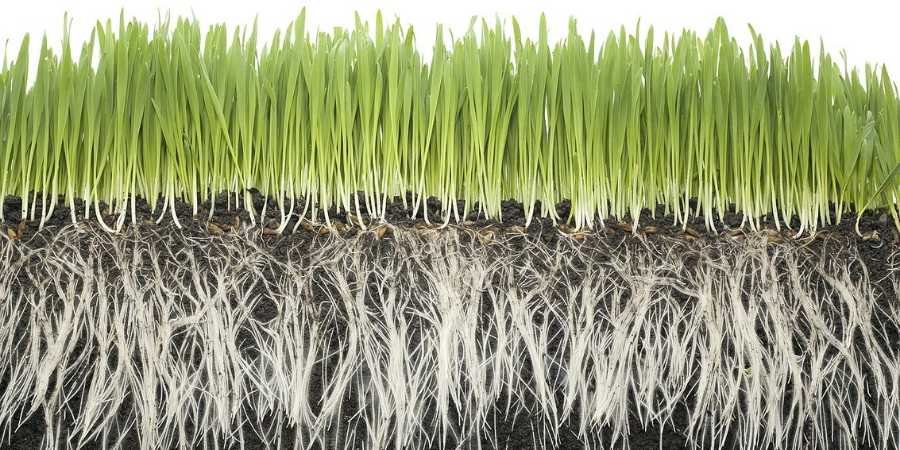End of Summer Lawn Tips
- "The Lawn Care Nut"August 27, 2022
What an interesting summer it has been for my friends across the Midwest and through the transition zone. You had no spring, then a hard blast of heat in the very beginning of summer and now it’s been fairly mild the last few weeks across much of the middle of the USA.
What does this mean for lawns?
Summer Lawn Disease
One thing I’ve seen a lot of is dollar spot disease. This is one that affects Kentucky Bluegrass, ryegrass, and fescue all about equally. It starts out as little silver dollar-sized brown spots that quickly grow to the size of a baseball, then grow together making a real mess of a look in an otherwise green and healthy lawn.
You can see some in lawns in Michigan in this clip of a recent video I released.
The way through dollar spot disease is just to be patient with it. The disease only affects the leaf blades, not the crown or roots of the grass plant and with the upright growth habit of cool season grasses, the disease literally gets “mowed off” every week when you cut the lawn.
Bagging your clippings during this time is a good idea. You can also give the lawn an application of Milorganite to encourage a little more growth, especially since many of you have been getting these favorable daytime temps and rain, keeping the lawn growing steady is a good idea.
Within just a few weeks, all the damage should be grown out and gone, completely.

Summer Weeds In The Lawn
The big one we are seeing now is crabgrass. You’ll know it because it’s lime green and shows up around the edges of the driveway and sidewalks the most. This grassy weed is a spring annual which means it grows from seed in spring, shows up in summer (right now), and drops seeds until fall.
Then the following spring the cycle starts all over again but this time there are thousands more seeds there just waiting to germinate.
The best way to control crabgrass is by using pre-emergent herbicides in the spring BEFORE the crabgrass seeds germinate. Right now though, here in the back half of August, it’s too late for that.
All you can do now is just continue to mow frequently to discourage the maturity of the seeds it tries to drop and hand pull in the worst areas.
There are chemical controls available but it’s even getting a little late for that now. Once crabgrass gets to a certain level of maturity it’s really tough if not impossible to kill. For most of you, the crabgrass has reached that point so again your best bet is frequent mowing and hand pulling.

There is good news here and that is you can prevent the vast majority of this from happening again if you get ahead of it next spring. Here is a blog post detailing some of the pre-emergent strategies you can look forward to in the next season.
I have also seen quite a bit of nutsedge popping up. This is being encouraged because of the rain that you’re getting. Nutsedge is a really different type of weed in that we discourage people from pulling it. If you leave fragments of the base behind (called “nutlets”) those can split off and send up two or more new plants to replace the one you pulled.
Nutsedge can be controlled with herbicides, but the first consideration is to look at water and moisture management. If you see the nutsedge in places where water pools, this may be a sign that the area needs to be looked at for drainage improvements in the future. In this case, you are using the weeds to show you problems in the lawn that may not have been clearly evident to you prior.

One other weed I am seeing a lot of, even down here in Florida, is spurge. There is spotted spurge and plain old garden spurge, both look similar and they are prolific this time of year.
Spurge is so prolific with its seed production that it quickly becomes a year-round problem for many of us, especially further south. You can stop it with both pre-emergent and post-emergent herbicides but a thick lawn is going to be your best offense.
We say that with all weeds that “a thick lawn is your best defense against weeds in the lawn” and that is very true when it comes to spurge.
It grows low to the ground so a tall, thick lawn can literally shade it and crowd it out. If you have a big spurge problem, aerating and seeding in the fall is a great way to get your lawn thickened up to help in this challenge!
Fertilizing the Lawn In Summer
People will often ask if they should or can still be fertilizing the lawn in summer. If you are still mowing at least once per week and your lawn is not dormant, then for sure you can and should be fueling that growth.
Fueling it doesn’t mean pushing it too hard. Nitrogen drives the bus but you can stay in the lower gears and throttle down while it’s hot.
In terms of fertilizing with Milorganite, I’d recommend you folks who are looking to push out dollar spot or crowd out some spurge, hit the lawn with 10lbs/1,000 of the Milo. This will give you .6lbs/N/1,000 which is slow release and perfect for this time of year. Of course that shot of iron you’ll get will also keep the lawn greener than everyone else around you!
I’ll see you in the lawn!



